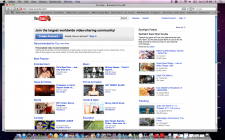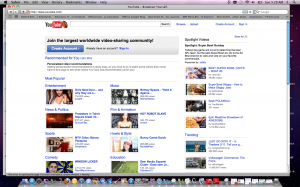
As most teachers know, there’s a lot of great educational content on YouTube—and there’s a lot of inappropriate material, too, from racy images to offensive comments that might sully an otherwise perfectly good video clip.
That’s why many schools block access to YouTube on their networks, which can be frustrating for teachers who want to use YouTube at school.
Now, a new service from internet security company M86 Security aims to solve this problem.
Called VuSafe, it’s a free website that lets educators search for relevant video content from YouTube and other sources, add video clips from these sources to an online library, and then share these clips with their students—without the inappropriate ads, comments, or outside links that might accompany them.
M86 demonstrated the new service during the Florida Educational Technology Conference (FETC) in Orlando last week.
For more coverage of FETC 2011:
“Our teachers are increasingly using more online videos on YouTube as tools in their classrooms, but there is apprehension because of possible inappropriate comments that might pop up as the videos are being viewed by students,” said Ralph Osmolinski, technology director for the Conemaugh Township Area School District in Pennsylvania, in a press release.
“M86 Security’s VuSafe allows teachers to preview YouTube videos, organize, and store those videos for their classes for safe viewing. It is the perfect solution for schools to safely integrate videos into the classroom for teaching purposes,” added Osmolinski, whose district has been beta-testing the new service.
Once they’ve registered on VuSafe, teachers can search for and preview video clips from YouTube and other sources through the website, and they can add clips they think are relevant for use in the classroom to their school’s VuSafe video library.
As they add relevant videos to their school’s video library, teachers tag these snippets by subject and age-appropriateness, and they can also grant access to certain groups of students, such as a particular class.
Teachers can show videos from the library to an entire class during instruction, or they can allow students to watch videos individually while at school or from home by giving students their own VuSafe account. In the latter case, students would only be able to find and watch videos they have been given access to; a video tagged for students in grades six and above wouldn’t be accessible to a fourth-grader, for instance.
Any time a video from YouTube or another source is played from the VuSafe library, it is stripped of all advertisements, comments, and outside links, so educators don’t have to worry about students seeing something they shouldn’t.
M86 competitor Lightspeed Systems already offers a similar service, but only for schools using Lightspeed’s web filter. As does VuSafe, Lightspeed’s Educational Video Library allows teachers to approve and share videos from YouTube at school—without the peripheral content such as comments and links.
A key difference is that VuSafe can be used even without M86’s filtering software. But there’s a catch: Schools that aren’t using M86’s web filter would have to unblock YouTube in order for the videos in the VuSafe library to display at school.
For more coverage of FETC 2011:
In that case, although content from the VuSafe library would be safe for viewing, students searching the web on their own from a school computer might have access to the entire YouTube archive.
For schools using M86 filtering software, that’s not a problem, as the software would allow content from the VuSafe video library to be shown while blocking the rest of YouTube.
For other schools, if their current filtering software is sophisticated enough, IT officials could grant access to YouTube through the teachers’ computers and block access to YouTube from other machines.
VuSafe is still in beta-testing mode, but schools can sign up for access any time. M86 plans a full launch of the service in April.
- Can technology help schools prevent AI-based cheating? - April 14, 2023
- How to ensure digital equity in online testing - July 6, 2022
- ‘Digital skills gap’ threatens innovation - May 30, 2022


Comments are closed.